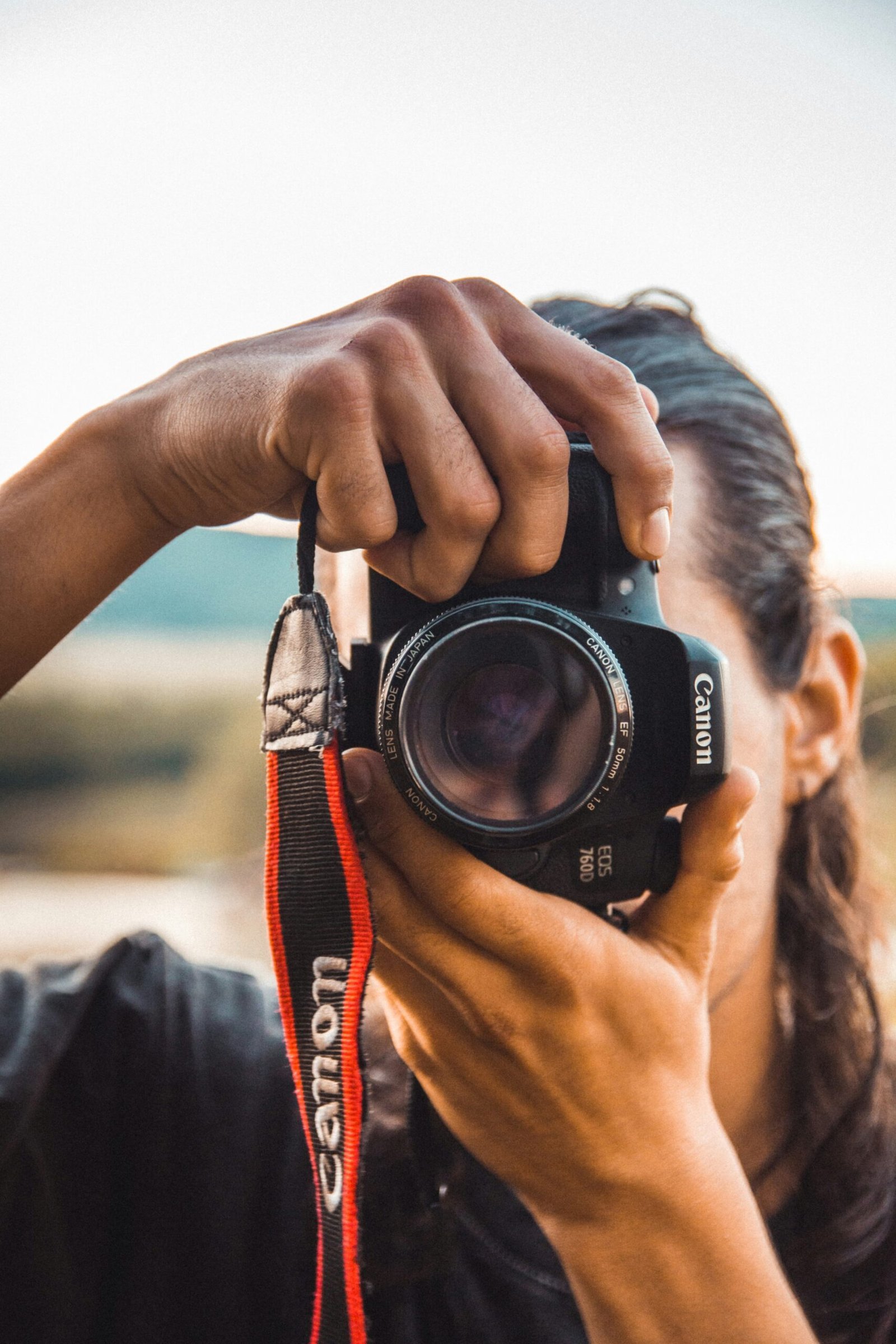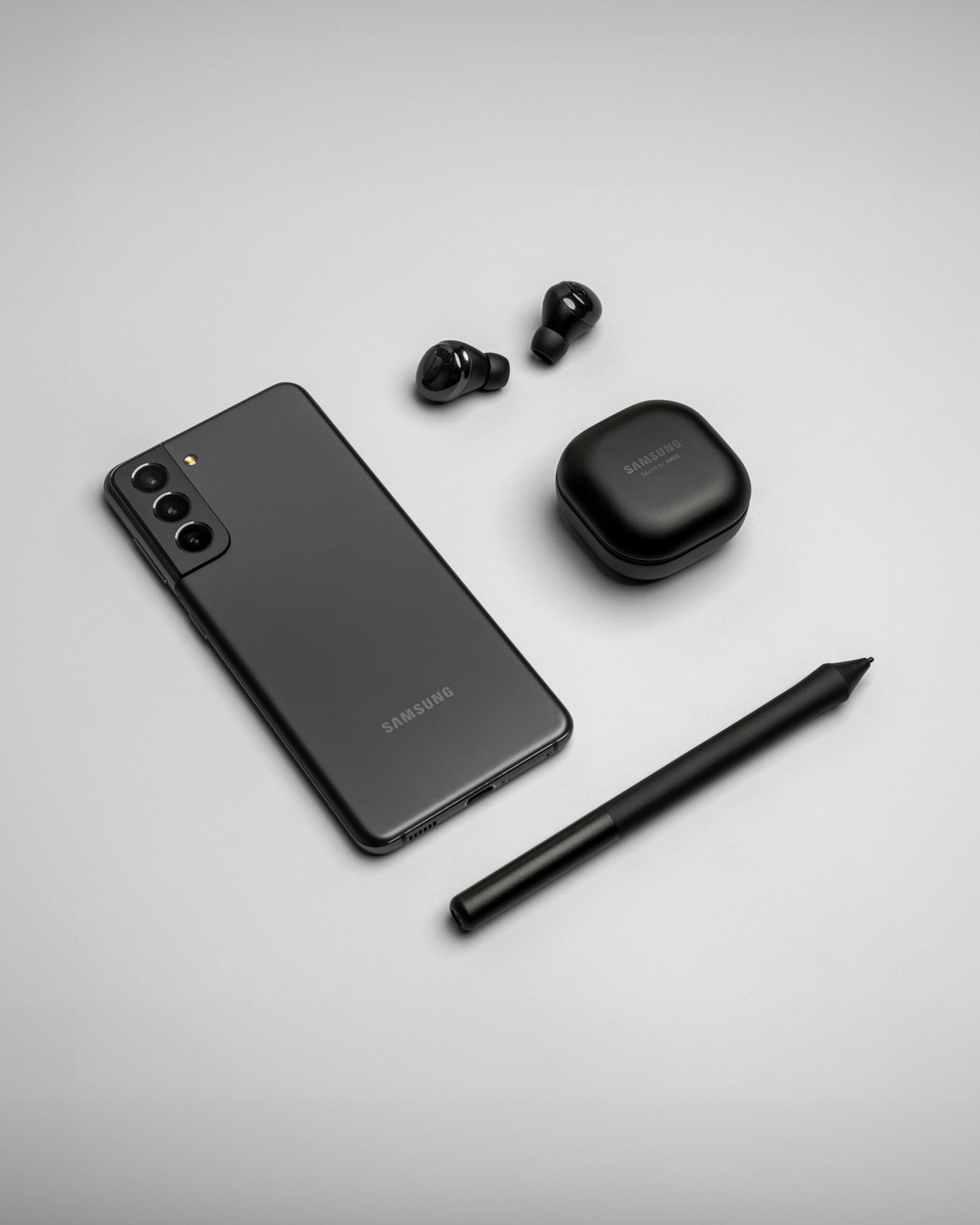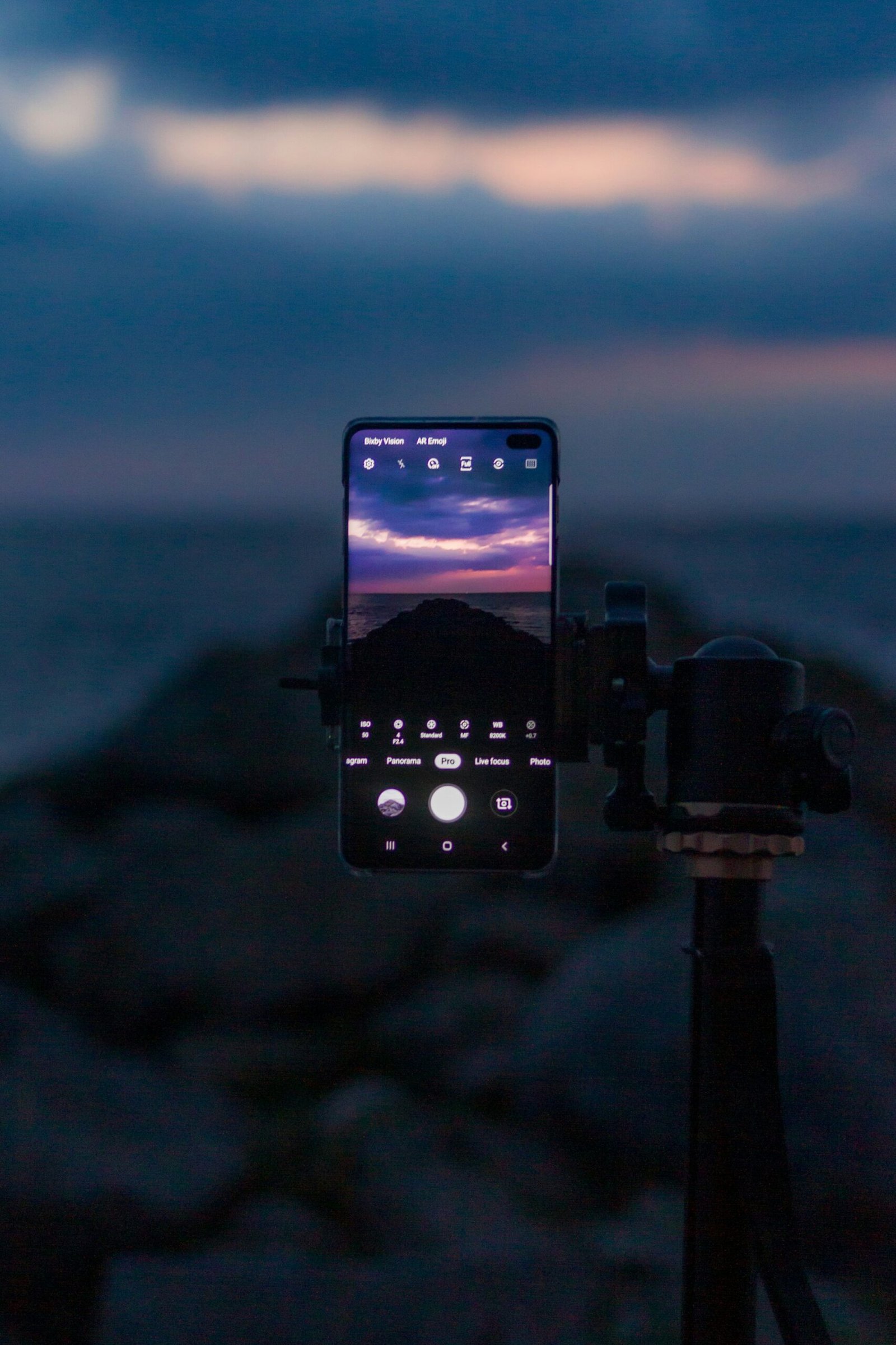Don't miss our holiday offer - 20% OFF!
The Best Cameras for Beginners in 2024: A Comprehensive Guide

Introduction: Why Choosing the Right Camera Matters
Selecting the right camera is a pivotal first step for any photography enthusiast. For beginners, this choice can significantly influence the development of their skills and passion. A camera that aligns with your current competency level and learning curve can make the initial foray into photography both exciting and manageable. Stepping into the world of photography with a tool that is either too simple or overly complex can lead to frustration or stagnation.
Usability is a key factor in choosing a beginner-friendly camera. Cameras with intuitive interfaces, straightforward controls, and comprehensive guide modes can smoothen the learning process, allowing novices to grasp essential techniques without being overwhelmed. The right balance of automation and manual settings enables beginners to experiment and gradually delve into more advanced features as they grow comfortable.
Moreover, a camera well-suited to a novice’s needs can nurture a growing enthusiasm for photography, transforming it from a casual interest into a serious hobby or even a professional pursuit. Ease of use fosters confidence, and early success can immensely motivate continued exploration and learning. Therefore, investing time in selecting a camera that caters to your current skills and future aspirations is crucial for building a strong foundational understanding of photography.
Ultimately, the right camera for a beginner doesn’t just facilitate capturing images—it shapes the entire learning experience. By accommodating a novice’s needs and encouraging growth, the ideal camera serves as both a tool and a tutor, guiding new photographers through their initial steps and into more complex territories with confidence and clarity.
Understanding Different Types of Cameras
In the realm of photography, choosing the right type of camera is paramount, especially for beginners who often face a plethora of options. As of 2024, the camera market is dominated by four primary types: DSLRs, mirrorless cameras, compact cameras, and bridge cameras. Each type presents distinct features, benefits, and drawbacks tailored to different user preferences and needs.
DSLRs (Digital Single-Lens Reflex cameras) have long been considered the gold standard for their robust build, optical viewfinder, and extensive range of interchangeable lenses. Typically favored by those desiring professional-quality photographs, DSLRs offer exceptional image quality and versatility. However, they are often bulkier and heavier, which might not appeal to beginners seeking portability.
Mirrorless cameras, on the other hand, have surged in popularity recently due to their lightweight design and advanced technology. Without the mirror mechanism found in DSLRs, mirrorless cameras offer a more compact form factor. They provide high-resolution sensors, electronic viewfinders, and continuous autofocus capabilities, making them an excellent choice for those who want a blend of portability and performance. However, they can be more expensive and their battery life tends to be shorter.
Compact cameras, often referred to as point-and-shoot cameras, are ideal for those new to photography due to their user-friendly interface and portability. These cameras are typically small enough to fit in a pocket and come with fixed lenses and automated settings. While they may lack the image quality and flexibility offered by DSLRs and mirrorless systems, they are perfect for casual photography and everyday use.
Bridge cameras serve as a middle ground between compact cameras and DSLRs. They offer more advanced features and greater optical zoom capabilities compared to compact cameras while maintaining a relatively manageable size. Although they do not support interchangeable lenses, they provide a wide range of shooting modes and manual settings, making them a suitable choice for beginners wanting to explore various photographic techniques without investing in multiple lenses.
Understanding these differences will help beginners make an informed decision about the type of camera that best suits their specific needs and preferences as they embark on their photographic journey in 2024.
Key Features to Look for in a Beginner Camera
When venturing into the world of photography, selecting the right camera is crucial for fostering growth and ensuring a positive experience. Key features in a beginner camera can significantly influence ease of use and learning curve, making the journey more enjoyable. Here are some essential attributes to consider:
Ease of Use: A beginner camera should be user-friendly, with an intuitive interface and simple controls. Cameras designed with easy navigation and readily accessible settings help newcomers concentrate on capturing moments rather than grappling with complex operations.
Automatic Modes: For those starting out, having various automatic modes available is invaluable. Features like Auto mode, Scene mode, and preset exposure settings enable beginners to take quality photos while they gain confidence and understanding of more manual controls.
Image Quality: High image quality, in terms of resolution and sensor performance, plays a pivotal role. Even entry-level cameras should aim to produce clear, vibrant photos. A good sensor and a decent megapixel count facilitate superior image production, giving beginners a strong foundation.
Durability: A robust and durable build is beneficial, especially as beginners may initially handle cameras less delicately. Look for cameras constructed from sturdy materials that can withstand minor drops or bumps without compromising functionality.
Connectivity Options: Modern connectivity features, such as Wi-Fi and Bluetooth, are increasingly sought after. These options allow for seamless sharing of images, easy backup, and remote camera control via smartphones or tablets, making the photography process smoother and more integrated with existing technology use.
Size and Weight: Portability is key when starting out. A lightweight, compact camera is easier to carry and encourages more frequent use. Bulky cameras might deter beginners from practicing regularly due to inconvenience.
Price Points: Budget is a significant consideration. There is a vast range of beginner cameras available at various price points. An affordable yet feature-rich option strikes a balance, ensuring that beginners have access to essential components without excessive financial strain.
These key features collectively enhance the learning experience, empowering beginners to capture stunning images while steadily building up their skills and confidence in photography.
Top Recommendations: Cameras to Consider in 2024
For beginners stepping into the world of photography, selecting the right camera can be a challenging task. In 2024, several models cater specifically to novice photographers, offering an optimal blend of quality, ease of use, and affordability.
First on the list is the Canon EOS Rebel T8i. This model is a standout choice, featuring a 24.1 MP APS-C sensor, which is excellent for capturing detailed images. It offers a user-friendly interface with guided modes and an intelligent auto function, making it ideal for entry-level users. The camera’s compatibility with Canon’s extensive range of EF and EF-S lenses ensures that as skills grow, so too can the photographer’s equipment.
The Sony Alpha a6000 is another top recommendation. A mirrorless option that is lightweight and highly portable, it comes with a 24.3 MP APS-C sensor and an intuitive autofocus system. Beginners will appreciate its compact size and the breadth of available Sony E-mount lenses. The a6000 provides an excellent balance between performance and price, making it a worthy contender for new photographers.
For those inclined towards higher-end features without breaking the bank, the Nikon Z50 is a stellar choice. With a 20.9 MP APS-C sensor, this mirrorless camera showcases an ergonomic design and an outstanding electronic viewfinder. The camera also boasts a wealth of video capabilities, including 4K recording, which is great for users looking to explore videography. Nikon’s Z-mount lenses ensure superior optical quality, further enhancing its appeal for enthusiasts.
Another noteworthy camera is the Olympus OM-D E-M10 Mark IV. This model thrives on portability and ease of use, featuring a 20.3 MP Micro Four Thirds sensor. The in-body image stabilization and user-centric design make it a favorite among beginners who prefer a more hands-on approach. Its lower price point and variety of compatible lenses provide both affordability and adaptability.
Lastly, the Fujifilm X-T200 makes the cut with its retro aesthetic and modern functionalities. This camera houses a 24.2 MP APS-C sensor, offering superior image quality and a robust set of features. The articulating touchscreen and simplified controls cater well to beginners looking for both ease and style. Fujifilm’s X-mount lenses allow for ample creative exploration as users develop their skills.
These top cameras for beginners in 2024 symbolize the harmonious blend of innovation and usability, making the learning curve both enjoyable and rewarding for new photographers.
Best Budget-Friendly Camera Options
For those stepping into the world of photography, finding the right balance between cost and features is crucial. Fortunately, several budget-friendly camera options in 2024 can cater to aspiring photographers without sacrificing essential capabilities. These affordable beginner cameras are an excellent starting point, allowing you to explore photography’s nuances while maintaining financial prudence.
One noteworthy option is the Canon EOS Rebel T7. Priced competitively, this DSLR offers a 24.1 MP APS-C CMOS sensor, ensuring high-quality images with impressive detail and clarity. With built-in Wi-Fi and NFC, sharing your photos becomes seamless, and the camera’s intuitive interface is ideal for novices. The Rebel T7 also provides a solid foundation for learning manual controls and experimenting with different photography techniques.
Another stellar choice for beginners is the Nikon D3500. Renowned for its user-friendly design and robust performance, the D3500 features a 24.2 MP sensor and EXPEED 4 image processor. The camera’s Guide Mode is particularly beneficial for new users, providing step-by-step assistance in capturing various types of shots. Its lightweight and compact build make it easy to carry around, making it perfect for everyday use and travel photography.
For those interested in mirrorless options, the Sony Alpha A6000 stands out as a top contender. Despite its affordable price point, the A6000 comes equipped with a 24.3 MP sensor and ultra-fast autofocus system. The electronic viewfinder and tiltable LCD screen allow for versatile shooting angles, making it an excellent choice for creative photography. Moreover, its portability and range of available Sony E-mount lenses make it a flexible option for growth and experimentation.
Lastly, the Fujifilm X-T200 offers a blend of modern design and strong performance. This mirrorless camera boasts a 24.2 MP APS-C sensor and a highly responsive touchscreen interface. The X-T200’s film simulation modes can help beginners easily achieve various aesthetic styles, enhancing creativity and learning. Additionally, its 4K video capabilities provide an opportunity to dabble in videography without investing in additional equipment.
These budget-friendly cameras prove that one does not have to break the bank to enter the world of photography. By prioritizing essential features and user-friendly interfaces, they provide an excellent foundation for any budding photographer’s journey.
Accessories to Complement Your New Camera
Purchasing a new camera is an exciting step for any budding photographer. However, to truly maximize your photography experience, it is crucial to consider the complementary accessories that can enhance your capabilities and ensure you’re always ready to capture that perfect shot. Below, we elaborate on several essential accessories for beginners.
First and foremost, a reliable camera bag is indispensable. It provides secure and organized storage for your camera and various accessories. Opt for a bag with ample padding to protect your equipment from accidental damage while on the move. Additionally, compartments for lenses, batteries, and other smaller items are beneficial for keeping everything in order.
Next, consider investing in a sturdy tripod. A tripod is essential for stabilizing your camera during long exposure shots, low-light conditions, or when using a telephoto lens. For beginners, a lightweight yet robust tripod that is easy to carry and set up will prove immensely valuable.
Extra batteries are another critical addition to your camera gear. Nothing is more frustrating than running out of battery power during an important shoot. Keeping fully charged spare batteries on hand ensures you’ll never miss a moment due to a dead battery.
Likewise, having adequate SD cards is essential for storing your photos and videos. High-capacity and high-speed SD cards enable rapid writing of data, resulting in a smoother shooting experience, especially when capturing in burst mode or recording high-definition videos.
Lens filters can significantly enrich your photographs. These include UV filters that protect the lens from scratches and dust, polarizing filters that reduce reflections and enhance color saturation, and neutral density filters that manage exposure levels in bright lighting conditions.
Lastly, maintaining your camera in pristine condition with a cleaning kit is fundamental. A typical kit comprises a blower, cleaning solution, microfiber cloths, and brushes. Regular cleaning prevents dust and dirt from affecting image quality and ensures the longevity of your equipment.
Incorporating these accessories into your photography toolkit will not only enhance your ability to capture stunning images but also safeguard your investment, allowing you to grow and develop your skills with confidence.
Picking up your first camera can be both an exhilarating and daunting experience. To ensure you get the most out of your new equipment and quickly advance your skills, it’s essential to start with the basics. Understanding key concepts such as composition, lighting, and camera settings can drastically improve the quality of your photos.
Mastering Composition
Composition pertains to how elements are arranged within a photograph. Begin by familiarizing yourself with the Rule of Thirds, where the frame is divided into nine equal segments by two vertical and two horizontal lines. Placing your main subject along these lines or at their intersections often results in more balanced and visually appealing images. Additionally, consider experimenting with leading lines, symmetry, and framing to create more dynamic compositions.
Understanding Light
Lighting is one of the most critical aspects of photography. Natural light, available in abundance from the sun, varies greatly depending on the time of day and weather conditions. Early morning and late afternoon, referred to as the “golden hours,” offer soft, warm light that is particularly forgiving and flattering for most subjects. Conversely, midday sunlight can be harsh, casting strong shadows. Learning how to manipulate natural light and the conditions that affect it can elevate your photos dramatically.
Experimenting with Settings
Your camera’s settings are tools at your disposal to achieve specific photographic effects. Start with the basics: aperture, shutter speed, and ISO. Aperture controls the depth of field, allowing for striking portraits with blurred backgrounds or landscapes with sharp details throughout. Shutter speed influences motion; a fast shutter speed captures rapid movement without blur, whereas a slow shutter speed can create artistic effects like motion blur. ISO adjusts the camera’s sensitivity to light; though higher ISO can help in low-light situations, it can introduce noise. Regularly experimenting with these settings will provide a better understanding of how they work together to create a desired image.
Continuous Learning
To further hone your skills, consider enrolling in beginner photography courses or exploring online tutorials. Many educational platforms offer comprehensive courses that cover everything from basic technical skills to more advanced techniques. Free resources such as YouTube, photography blogs, and community forums can also provide valuable insights and inspirations. Engaging with a community of photographers can offer constructive feedback, motivation, and tips that can accelerate your learning curve.
Getting started with photography is an exciting journey. Start with these practical tips, and you’ll be well on your way to capturing stunning images with your new camera.
Conclusion: Finding the Right Camera for Your Journey
Embarking on the journey of photography is both exciting and overwhelming, especially for beginners navigating through the plethora of camera options available in 2024. Throughout this guide, we have explored various types of cameras, highlighting their unique features, advantages, and potential drawbacks. From DSLRs to mirrorless systems, and compact cameras to bridge models, each category offers tools tailored to different levels of expertise and creative aspirations.
The key to choosing the best camera for a beginner lies in understanding and aligning your personal preferences, specific needs, and budget constraints. If portability and ease of use are paramount, compact cameras might be the ideal choice. Conversely, if the allure of interchangeable lenses and comprehensive manual controls appeals to you, investing in a beginner-friendly DSLR or mirrorless camera could be highly rewarding.
Additionally, it is essential to consider factors such as image quality, battery life, user interface, and the availability of accessories and lenses that will complement your photographic journey. Newbies should not shy away from seeking cameras with built-in learning aids or intuitive auto modes, ensuring a seamless transition as technical proficiency increases over time. Equally important is the budget, as understanding where to allocate funds effectively will ensure you get the best value without compromising on critical features.
To make an informed decision, take into account everything discussed in this guide, and remember that the best camera for you is one that not only fits comfortably in your hands but also resonates with your photography style and future goals. Whether capturing family memories, exploring the art of landscape photography, or venturing into travel documentation, your chosen camera should inspire confidence and creativity.
Ultimately, patience and due diligence in selecting a camera will lay a solid foundation for an enriching photographic experience. Let your passion drive your choice, transforming a simple gadget into a powerful tool for storytelling and artistic expression.


